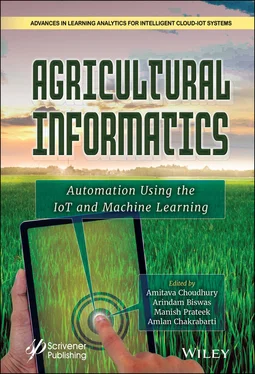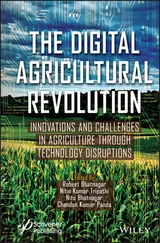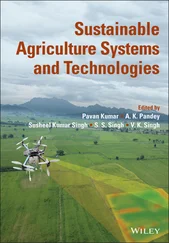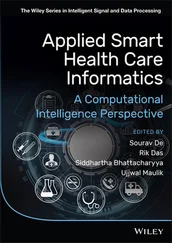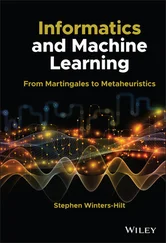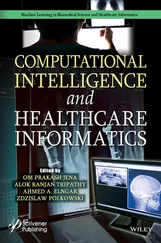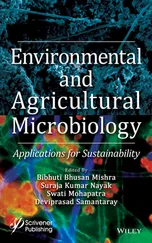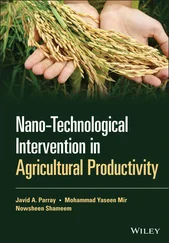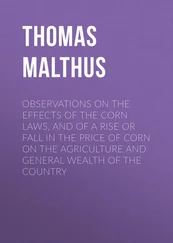In summary, at present there is a genuine need for agriculture upgradation and this book provides a technological overview that will open new dimensions which may be useful in discovering solutions to aid in the current growth in agricultural processes. The editors of this book are thankful to the all authors whose valuable contributions made this book as complete.
Editors Amitava ChoudhuryUniversity of Petroleum and Energy Studies, Dehradun, India Arindam BiswasKazi Nazrul University, Asansol, India Manish PrateekUniversity of Petroleum and Energy Studies, Dehradun, India Amlan ChakrabartiUniversity of Calcutta, Kolkata, India January 2021
1
A Study on Various Machine Learning Algorithms and Their Role in Agriculture
Kalpana Rangra and Amitava Choudhury*
School of Computer Science, University of Petroleum and Energy Studies , Dehradun, India
Abstract
The term machine learning indicates empowering the machine to gain knowledge and process it for decision making. The domain of crop production is very important for organizations, firms, products related to agriculture. Data collection is done from different sources for crop forecasting. The collected data may vary in shape, size and type depending upon the source of collection. Agricultural data may be collected from metrological sources, agricultural and metrological, soil, sensors that are remotely installed, agricultural statistics, etc. Marketing, storage, transportation and decisions pertaining to crops have high requirement of accurate data that should be produced timely and can be used for predictions.
Keywords: Agriculture, machine learning, smart farming, decision tree, crop prediction, automated farming, ML models for agriculture
Machine learning can be studied under two vast categories called supervised and unsupervised learning. Supervised learning pertains to fact that data and process is supervised by supervisor. The process of training data is controlled to find the conclusions for new data. Some of the most commonly used techniques for supervised learning are Artificial neural network, Bayesian network, decision tree, support vector machines, ID3, k-nearest neighbor, hidden Markov model, etc. For unsupervised learning enormous volume of data is given as input to program for which the program generates patterns and identify the relations among them. Unsupervised learning can be used to discover the hidden patterns. K-nearest neighbor algorithm, self-organizing map methods, and partial based clustering techniques, hierarchical clustering approaches, k-means clustering, etc., belong to class of unsupervised learning. Predictive power of computers can be increased by integrating machine with statistics. Data scientists and analysts use this integration to predict trends from raw data that is fed into the system. The amount of data obtained in agricultural field is increasing enormously so the machine learning techniques can be applied to agricultural production for predicting crop related queries. Decisions regarding crop production can be made by using several available machines learning techniques. All such techniques use mathematics and stats for algorithm generation.
1.1.1 Machine Learning Model
1.1.1.1 Artificial Neural Networks
The artificial neural network is a collaboration of artificial neurons based on human brains biological architecture. They replicate the behavior of the human brain for processing the data. Artificial neural network belongs to the category of supervised learning where a part of data is used for model training and the remaining is tested on the trained model. Once the neural net is trained, the similar patterns can be generated for obtaining efficient and solutions to problems and predictive analysis. The trained neural network can produce solutions even if the input data is incomplete or incorrect. Adding more layers and data increases the accuracy of the ANN. The ANN is capable of adopting their complexity without the need to know the underlying principles. The relationship among input and output for any process can be derived using ANN. Authors used [1] ANN to predict potato yield in Iran. Figure 1.1shows the basic architecture of artificial neural network.
Input energy was taken as the input parameter. The work intended to design output energy and greenhouse gas emission for production forecast. The data collection was done from 260 farmers by taking inputs from them. Multiple ANNs were designed and utilized to forecast. The forecast efficiency was assessed from quality aspect. The prediction results. Electricity, chemical fertilizer and seed were identified as most important factors affecting production rate. Literature [3] quotes ANN systems are the results of inspiration of the human brain. Each node in neural net represents neurons and each link is the representation of interaction among two associated neurons. Execution of simple tasks is the responsibility of single neuron while the network performs more complex tasks that are aggregations of all the neuron groups in network. There exists an interconnected set of input and output that has weighted connections. The testing phase of network enables them to earn to predict the input sampled by performing weight tuning. Flood forecast uses neural networks to model rainfall and runoff relationships for predicting flood situations. Neural networks have better performance over conventional computing methods. ANN finds suitability for the time consuming problem solutions such as pest prediction. Research [4] found that validation of the symptoms of tomato crop can be done using a web-based expert system that utilized applied artificial learning and machine learning algorithms particularly for the identification task. In crop expert system applicant is advised with crop related information. The farmer gets insight for crop varieties, pest affecting the crop production and diseases symptoms on the crop, cultural practice for good yield, mosaic of tomato fruits and plant. Client is also facilitated for communicating with the system online. The query put forward by the client is responded by the expert system that advises and informs client regarding all the hazards and control measures. The knowledge expert system provides data about disease recognition, pest and varieties of tomato crop.
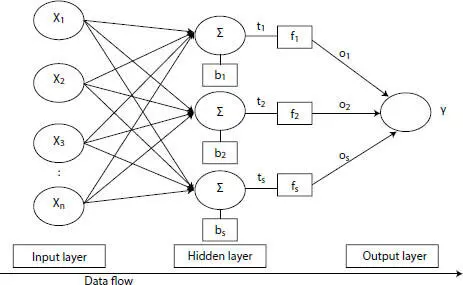
Figure 1.1 Layers and connection of a feed-forward back propagation ANN [2].
Machine learning algorithms are reliable for decisions and can be integrated with statistics for implementation in applied machine learning [5]. Machine Learning is an emerging subject to expedite the release of new genotypes. There exist several uses of Machine Learning in maize breeding. Few of them can be enlisted as loci mapping based on quantitative traits, heterotic group assignment and selections based on genomes. Authors [6] implemented ANN to predict crop production. The parameters used for the task were related to soil properties such as pH, nitrogen, phosphate, potassium, organic carbon, calcium, magnesium, and sulfur, manganese, copper, iron, depth and climate parameters such as temperature, rainfall, humidity. Cotton, Sugarcane, Jawar, Bajara, Soybean, Corn, Wheat, Rice and Groundnut were the crops taken for experiment.
1.1.1.2 Information Fuzzy Network
Research experiments analyzed parameters for predicting crop yield. The study used aggressive neural network for prediction. Remote sensing was one among the used parameters for the work [7, 8]. The experiments implemented the flexible Neuro-fuzzy Inference system (ANFIS). The inputs to the ANFIS were moisture content available in soil, biomass information of the ground and repository organ. Yield was the output node for result. Limited data was used for designing the network to predict values for future. This is the challenge in prediction. Rearrangement of data was done by eliminating one year and using the remaining data. The estimation deviation was calculated and compared to the yield of the year that is left out. The procedure was applied recursively to all the years and averaged efficiency for prediction was obtained.
Читать дальше
